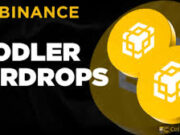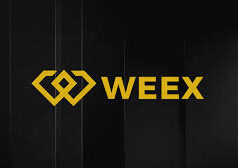When you think of Jamie Dimon, you might recall his outspoken remarks. For years he called Bitcoin a “fraud” and famously threatened to fire any trader at JPMorgan who touched it. (Erick Kim Photography)
Today, that tone has markedly changed. He now acknowledges that stablecoins and digital assets are “real” and says JPMorgan will engage with them. (The Economic Times)
Specifically, he has advocated for participating in stablecoin transactions, rather than sitting on the sidelines and potentially missing out. (Binance)
Why does this shift matter? Because banks like JPMorgan rarely reverse course unless they see structural change. Dimon’s words signal the transition from skepticism to strategic engagement — that matters for corporates, investors and regulators alike.
What Dimon Is Actually Saying
Let’s unpack what Dimon’s comments amount to:
- He says that JPMorgan will be involved in its own deposit token (called JPMD) and in broader stablecoin initiatives. (Investopedia)
- He admitted he still wonders, “Why would you want a stablecoin instead of just a payment?” — yet he emphasized: fintechs are smart, payments are evolving, we must pay attention. (MarketWatch)
- He indicated that digital assets (including stablecoins) will become part of the system by late 2025. (The Economic Times)
- He stressed the risk of sitting out: “Instead of not participating and missing the boat,” the bank will engage — in part to avoid being irrelevant. (Binance)
In short: not a wholesale embrace of crypto wild-west, but a measured strategy to get involved.
How This Reflects a Broader Trend
This is not about JPMorgan alone. What we’re seeing:
- Major banks are shifting from “we’ll monitor crypto” to “we will participate in stablecoins and tokenization.” (Business Insider)
- Regulatory frameworks are evolving: for example, U.S. legislation has begun to address stablecoins explicitly. (MarketWatch)
- Institutional demand is growing: clients want access to digital-asset-adjacent services, banks respond or risk falling behind.
So when Dimon says “we’re going to be involved… to be good at it,” he’s also acknowledging the voices of tech disruption, client expectation and regulatory upgrade.
Why Now? What Has Changed
You might ask: what changed so that someone who once rejected crypto now says “we’ll be involved”? Several things:
- Infrastructure maturity. Blockchain, tokenisation and stablecoin frameworks are more robust now.
- Regulatory clarity improving. Policymakers are working on stablecoin legislation which reduces uncertainty.
- Client demand. Customers — from large corporates to institutional investors — increasingly view digital asset tools as part of their toolkit.
- Competitive pressure. Fintechs and non-banks are offering alternatives, so banks need to adapt rather than be disintermediated.
- Risk management. Instead of speculative crypto exposure, banks are framing it as payments, tokenised deposits, collateral for clients — controlled, regulated. For example, JPMorgan plans to allow institutional clients to use Bitcoin and Ethereum as loan collateral by late 2025. (The Economic Times)
Hence, the shift is less about wild speculation, more about institutionally-controlled adaptation.
What It Means for You (and Me)
Whether you’re an investor, business professional, or simply observing the landscape, here’s what the Dimon stance implies — and what actions you might consider:
For investors
- Recognise that banks moving into stablecoins signals increasing legitimacy.
- But also keep in mind: “participation” does not mean unchecked adoption; banks remain cautious. Dimon’s quotes illustrate this. (Investopedia)
- Consider how tokenisation and stablecoin use might affect treasury operations, cash-management, cross-border remittance, etc.
For businesses & corporates
- If you manage cash or payments, explore whether stablecoin-infrastructure could offer efficiency gains (especially cross-border).
- Banks like JPMorgan raising their hand might open those services at scale — so watch for offerings.
- Partnering or being ready could give competitive edge if peers adopt tokenised payments first.
For regulators & policy watchers
- This confirms that mainstream finance sees stablecoins as more than fringe.
- Regulatory frameworks (like the GENIUS Act in the U.S.) will increasingly shape how banks and fintechs interact with digital assets. (Wikipedia)
- Transparency, custodian risk, deposit-flight risk (from banks to tokens) remain topics. Banks’ involvement may mitigate or accelerate those concerns.
A Closer Look: What JPMorgan is Doing
Let’s dig into some of the specific steps JPMorgan is taking — and how that supports Dimon’s narrative:
- The bank has launched its internal Stablecoin-adjacent token called JPMD (JPMorgan Deposit Token), available today to its institutional clients as a pilot. (The Economic Times)
- It is building out tokenisation infrastructure (through its Onyx/Kinexys unit) for payments and settlements. (Erick Kim Photography)
- It is preparing to allow institutional clients to use crypto assets as collateral (e.g., BTC, ETH) by late 2025. (The Economic Times)
- It is actively saying: we will be involved in stablecoins, so we understand and adapt. (Phemex)
These actions suggest the message is more than lip-service; it’s strategic.
The Risks and Considerations
Of course, participation in stablecoins doesn’t mean no risk. Here are some caveats to keep in mind:
- Regulatory uncertainty remains: even though frameworks are developing, they are not yet final.
- Stability of stablecoins: pegged tokens must maintain trust. Bank-issued tokens versus open-market stablecoins may differ.
- Bank model disruption: if stablecoins take off in payments, banks lose some fee income — so their motive may be partly defensive. (MarketWatch)
- Token custody, governance, smart-contract risk: just because a token is “stable” doesn’t mean immune to operational and technical failures.
- Timing matters: JPMorgan and other banks are proceeding gradually. For individuals or businesses, prematurely assuming full baked-in solutions could lead to disappointment.
Thus, following Dimon’s advice doesn’t mean jumping recklessly — it means staying informed and adaptable.
My View: What This Could Lead To
Here are some thoughts on how this may unfold over the next 12–24 months:
- More banks will roll out proprietary deposit-tokens or partner with fintechs to issue stablecoin-like instruments.
- Cross-border payments using tokenised money will become more common, reducing friction, cost and time. The bank-led infrastructure may replace some legacy rails.
- Treasury operations may increasingly treat stablecoins and tokenised cash as part of their toolkit (especially for corporates with global operations).
- Regulatory clarity will push more institutional adoption — once banks feel confident their compliance, custody and governance are covered, they’ll ramp up offerings.
- The market will continue to differentiate: open stablecoins (public, widely tradable) vs bank-issued tokens (permissioned, institutional). The strategy Dimon outlines aligns more with the latter.
In effect, the message could be summarised: “Don’t ignore what’s coming just because you don’t fully understand it yet. Get involved, but carefully.” That captures Dimon’s tone.
Final Thoughts
To sum up: Jamie Dimon’s advocacy for participating in stablecoin trading reflects a significant pivot. From skeptic to strategic participant, he recognises that digital assets — especially stablecoins and tokenisation — are becoming embedded in the financial ecosystem.
For businesses, investors and policy observers, the implication is clear: this space isn’t fringe anymore; it’s mainstreaming. But that doesn’t remove the need for due diligence, risk management and strategic timing.
If you want, we can explore which stablecoins or bank-tokens are most likely to be adopted next, or which corporate use-cases are gaining traction. I’d be happy to dig in.
Sources:
- “JPMorgan CEO Jamie Dimon softens stance, says Crypto and Stablecoins are ‘real’; Digital assets will be ‘part of the system’ by late 2025.” The Economic Times. (The Economic Times)
- “JPMorgan Embraces Stablecoins, Eyes Institutional Crypto Integration by 2025.” Phemex News. (Phemex)
- “JPMorgan CEO Advocates Participation in Stablecoin Transactions.” Binance News. (Binance)
- “Jamie Dimon Says JPMorgan Plans to Get More Involved in Stablecoins.” Investopedia. (Investopedia)
- “Wall Street’s plans for stablecoin, from Goldman to JPMorgan.” Business Insider. (Business Insider)



























